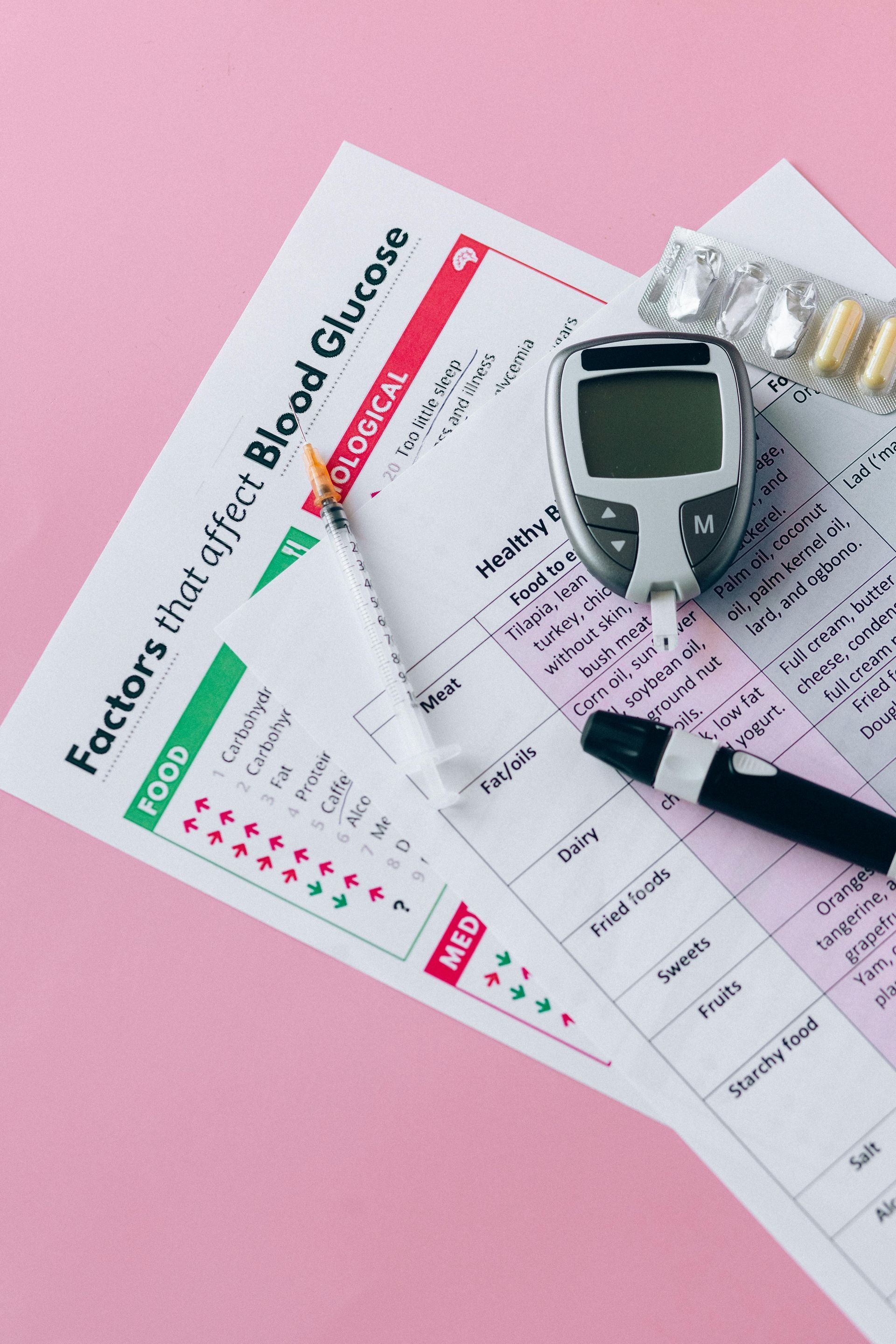This is a subtitle for your new post

Spoiler alert: You don’t have to be diabetic to have blood sugar problems.
Millions of people walk around every day with out-of-control blood sugar—but they have no idea. Why? Because early symptoms are often subtle, common, and easily blamed on everything but blood sugar imbalance.
In fact, many people with prediabetes or insulin resistance feel “mostly fine”… until one day, they don’t.
And by then, type 2 diabetes may already be developing.
Let’s change that.
1. You’re Always Tired—Even After a Full Night’s Sleep
Yes, life is busy—but if you feel like you’re dragging through the day or craving naps after meals, blood sugar instability may be the culprit.
When your glucose is too high (or fluctuating), your body can’t efficiently turn sugar into energy. The result?
You feel wiped out, foggy, and maybe even a little moody.
*Chronic fatigue is one of the earliest and most overlooked signs of insulin resistance.*¹
2. You Crave Carbs and Sugar Constantly
You might think you just “have a sweet tooth”—but persistent cravings are often your body’s cry for balance.
When blood sugar spikes and crashes repeatedly, it tricks your brain into demanding more fast fuel—usually in the form of bread, pasta, soda, or sweets.
*Insulin resistance affects the brain’s reward center, making food cravings feel compulsive and hard to resist.*²
3. You Have Belly Fat That Won’t Budge
Excess fat around the abdomen is not just about aesthetics—it’s a major metabolic warning sign.
Belly fat (also called visceral fat) is closely linked to high insulin levels, which keep your body in fat-storage mode.
Even if your overall weight is stable, increased waist circumference may be a sign your body is **storing sugar instead of burning it.**³
Waist size over 35 inches for women or 40 inches for men is a red flag for metabolic syndrome.
4. You Crash After Meals
Feel sluggish, sleepy, or mentally foggy after eating?
That “food coma” feeling may mean your blood sugar spiked too high too fast, then dropped like a rock. This rollercoaster effect is common in people who are prediabetic or insulin resistant—even if they don’t realize it yet.
*Post-meal energy crashes are often caused by unstable blood sugar and poor glucose uptake.*⁴
5. You’re Having Vision Changes
Blurred vision, eye fatigue, or difficulty focusing—especially later in the day—can sometimes be linked to high blood sugar levels.⁵
Elevated glucose can swell the lens of your eye, temporarily changing your ability to see clearly.
This can happen long before a diabetes diagnosis, especially if blood sugar is swinging up and down without warning.
What You Can Do Right Now
If you see yourself in these symptoms, don’t panic—but don’t ignore them, either.
The earlier you act, the more powerful your results can be.
Start with These 3 Steps:
- Get tested. Ask your doctor to check fasting glucose, HbA1c, and insulin levels.
- Track how you feel after meals. Energy dips, cravings, and mood swings are all clues.
- Clean up your plate. Embrace whole food, plant-based meals rich in fiber, greens, legumes, and healthy fats to stabilize blood sugar naturally.
The best part? You can begin reversing insulin resistance before it ever turns into type 2 diabetes.
Final Thoughts
Uncontrolled blood sugar doesn’t always show up in obvious ways—but your body is speaking.
The key is learning to listen.
These five signs might be whispering something important:
"It’s time to make a change."
And the truth is—you can.
With the right food, movement, mindset, and support, you can take control of your blood sugar before it takes control of you.
Sources:
- Taylor, R. (2013). Type 2 Diabetes: Etiology and reversibility. Diabetes Care. https://doi.org/10.2337/dc12-1805
- Kullmann, S. et al. (2016). Brain insulin resistance at the crossroads of metabolic and cognitive disorders in humans. Physiological Reviews. https://doi.org/10.1152/physrev.00032.2015
- Després, J. P. (2012). Body fat distribution and risk of cardiovascular disease. Circulation. https://doi.org/10.1161/CIRCULATIONAHA.111.067264
- Colberg, S. R., et al. (2016). Physical Activity/Exercise and Diabetes. Diabetes Care. https://doi.org/10.2337/dc16-1728
- American Diabetes Association. Diabetes and Eye Health. https://www.diabetes.org/diabetes/eye-health










